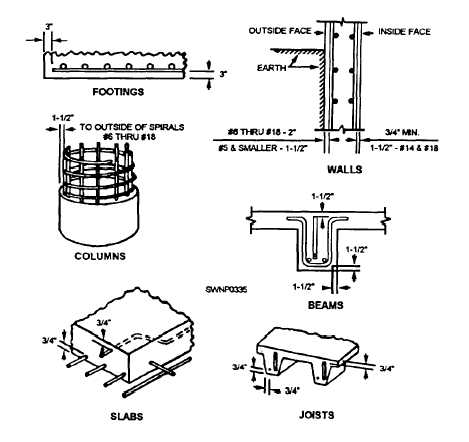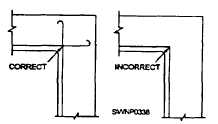
Figure 7-21. - Minimum coverage of rebar in concrete.
can be transmitted through the concrete and into another adjoining bar by a lap splice of proper length. To lap-weld wire fabric/wire mesh, you can use a number of methods, two of which are the end lap and the side lap. In the end lap method, the wire mesh is lapped by overlapping one full mesh, measured from the ends of the longitudinal wires in one piece to the ends of the longitudinal wires in the adjacent piece, and then tying the two pieces at 1-foot 6-inch (45.0 cm) centers with a snap tie. In the side lap method, the two longitudinal side wires are placed one alongside and overlapping the other and then are tied with a snap tie every 3 feet (.9 m).
Reinforcing bars are in tension and therefore should never be bent around an inside corner beams. They can pull straight through the concrete cover. Instead, they should overlap and extend to the far face for anchorage with 180-degree hooks and proper concrete coverage (fig. 7-23).
The bars can also be spliced by metal arc welding but only if called for in the plans and specifications. For bars which are placed in a vertical position, a butt weld is preferred. The end of the bottom bar is cut

Figure 7-22. - Bars spliced by lapping.

Figure 7-23. - Correct and Incorrect placement of reinforcement for an inside corner.
square, and the end of the top bar resting on it is cut in a bevel fashion, thus permitting a butt weld. For bars which will bear a load in a horizontal position, a fillet weld is preferred. Usually, the two bars are placed end to end (rather than overlapping), and pieces of flat bar (or angle iron) are placed on either side. Fillet welds are then made where the metals join. The welds are
Continue Reading